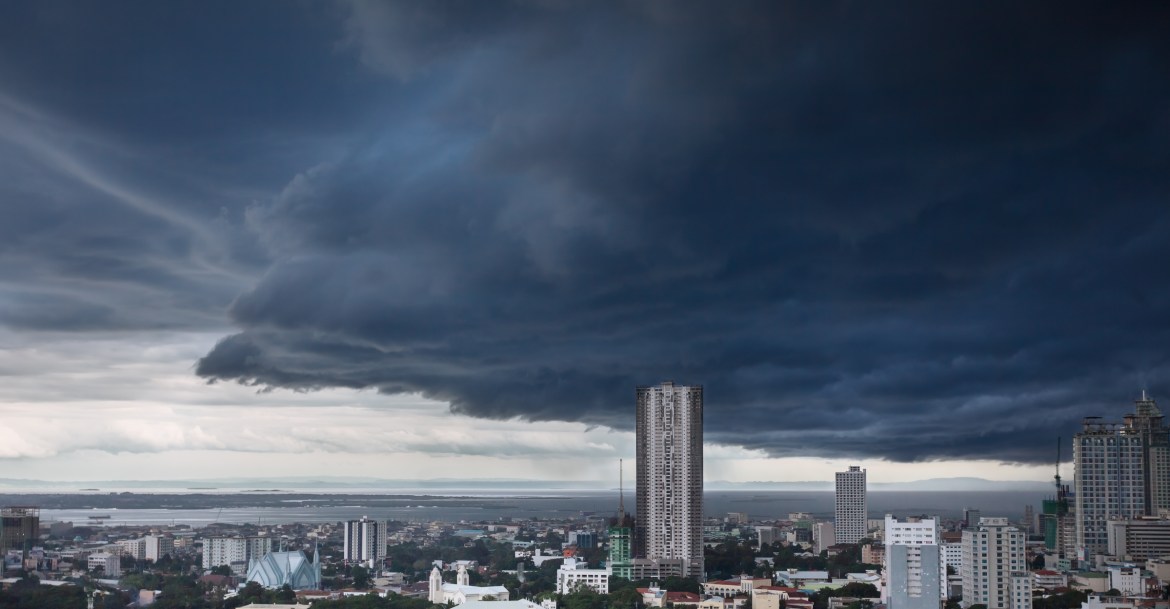There are many strong typhoons that visit the country each year. The heavy rains typically cause widespread flash floods in the cities while the strong winds manage to wreck even the strongest foundations.
People living in low-lying areas are often forced to evacuate their homes and are left to deal with the disastrous aftermath a few days later. Fortunately, Filipinos have learned how to adapt to these circumstances over time.
Since the Philippines is prone to experiencing a lot of typhoons yearly, it’s wise to equip yourself with the knowledge of what to do before, during, and after a typhoon. Doing this allows you to be prepared for any eventuality and helps keep you and your family safe from harm brought about by the storms.
The rainy season is just around the corner—are you ready for it? Below are some helpful pointers to keep in mind:
BEFORE A TYPHOON
Be up-to-date with news and advisories. Monitoring the typhoon by watching the weather forecast is one way of determining the safety measures you have to take. The typhoon’s movement and the amount of rainfall can prove to be insightful and will give you a good idea of how heavy the rains are going to be in your place.
Stock up on food supply and water. You’ll never know if there’s going to be a power outage in your area during a typhoon, so it’s best to stick with canned goods and other ready-to-eat foods. Your food and water supply should be enough for the whole family and should be able to last you a couple of days.
Check your house for needed repairs. There might be a hole in your roof that needs plastering or a broken window that needs fixing. Whatever it may be, now is the time to work on these repairs. It’ll save you a lot of time and resources to fix them now rather than deal with these after a super typhoon has swept through your house.
Be ready to evacuate. As early as now, you and the rest of the family should be packing enough clothes and storing important documents or possessions into different bags. In the event that you are told to evacuate, you can simply just pick up your bags and proceed to the evacuation center.
Have your emergency essentials ready. Create a checklist of all the items you need during a typhoon—flashlights, battery-operated radio, medicine, first aid, etc. You should be ready for a brownout to occur for hours to even days.
DURING TYPHOON
Stay indoors. Strong winds during a typhoon can cause debris to fly around. It can also cause trees or lamp posts to get uprooted and block the streets. The heavy rains may also make the roads difficult to see while driving. Unless you completely have to, it’s safer to remain inside your house.
Watch the news or listen to the radio for advisories. This is one of the most important things you should do during a typhoon. Staying in the loop about significant updates on the weather can be very helpful, especially when you need to evacuate. Make sure to follow announcements immediately to ensure your family’s safety.
Do not wade in floodwaters. Wading in floodwaters can make you prone to contracting water-borne diseases like leptospirosis or leave you vulnerable to hazardous chemicals and foreign objects. It can likewise be very dangerous when a broken electrical cord is submerged in it. As much as possible, stay away from the flood. If you absolutely need to, make it a point to wear protective clothing like boots.
Turn off the main electrical power switch in your home. To avoid dangers or any more electrical problems, be proactive in switching off the circuit breaker in your house. Check that appliances are properly elevated and unplugged.
AFTER TYPHOON
Inspect your house before going inside. If you were asked to evacuate during the typhoon, you should do a quick check on the status of your house before entering. If it looks like your house suffered extensive damage from the storm, it isn’t advisable to go inside. Instead, seek help for the repairs that need to be done.
Be careful of unstable structures and fallen debris. After a typhoon, fallen trees or broken glass are likely scattered around the streets. Watch out for these when you’re on the road. Old structures may also have sustained great damage and can collapse so it’s best to stay away from these.
Be on the lookout for live wires in the flood. Precautionary measures when wading in the flood must still be followed even after the typhoon. There may be live wires or outlets that are submerged in the waters so be very careful. If you encounter one, call the proper authorities so they can do something about it.
Do not attempt to turn on appliances damaged in the flood. It is very risky to use electrical appliances that got wet from flooding. If you’re not knowledgeable on how the wirings in your home appliances work, have a technician look into them and conduct the proper repairs on them.
Drain water accumulated in objects around your home. Objects around your home may be filled with water after the heavy rains. To prevent them from becoming breeding grounds for mosquitoes, be sure to toss out the water and clean these items thoroughly.
Whatever the weather brings, it’s always a good idea to know how to cope with these kinds of situations. These tips will help you properly map out what you and your family need to do in the event of a strong typhoon.
In the end, you will not only help keep your loved ones away from danger but also save their lives as well. #StaySafe #StaySmart




